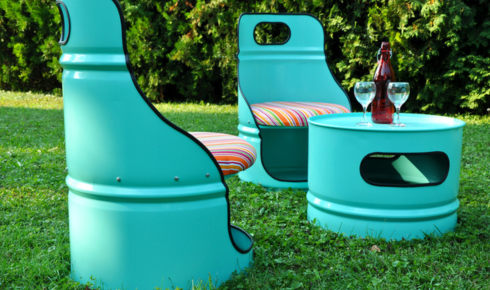Why Scrap Metal Deserves a Second Life
Scrap metal is often considered waste but holds potential far beyond the junkyard. Giving metal a second life reduces environmental impact, conserves natural resources, and minimizes the energy needed for producing new materials. Creativity and awareness allow everyday metal objects to be repurposed instead of discarded.
At home, scrap metal can be transformed into functional or decorative items—from garden art and shelving brackets to furniture accents or homemade tools. This practical reuse helps keep materials in circulation and reduces landfill waste. What can metal be used for? It can be used for structural frames, home fixtures, planters, fire pits, and sculpture projects. With some basic tools and a bit of imagination, households can contribute to sustainability by breathing new life into old metal in functional and expressive ways.
Types of Scrap Metals Commonly Found at Home
Scrap metal comes in many forms, and most households house surprising amounts. Old appliances—like broken toasters, dishwashers, washing machines, or even ceiling fans—are rich sources of recyclable metal. Garden sheds often shelter rusting tools, lawnmower blades, and roofing or fencing materials. Electronics tucked away in drawers like old phones and laptops contain precious metals like copper and gold in their wiring and circuitry.
- Ferrous metals: Magnetic metals like iron and steel are found in cast iron cookware, pipes, auto parts, and old furniture. Their recyclability makes them staples at scrap yards and DIY workshops.
- Non-ferrous metals: Valued for being lightweight and corrosion-resistant, these include copper wires, brass fixtures, and aluminum cans or frames. They tend to offer higher financial returns when recycled.
- Unusual sources: Even soda cans, bicycle frames, bed frames, keyboards, and light fixtures can be reclaimed and reinvented. Small parts like screws, hinges, or brackets should not be overlooked.
Sorting your home’s scrap metal into ferrous and non-ferrous piles maximizes the value of your collection and makes the process of repurposing or recycling faster and simpler. Using a basic magnet is an easy way to tell the difference—ferrous metals attract while non-ferrous do not.
Preparing Scrap Metal for Safe Reuse or Recycling
Safety is crucial when handling scrap metal due to sharp edges, rust, and hazardous substances. Always wear heavy-duty gloves, sturdy shoes, and protective eyewear. Clean metals by washing off dirt and residues; use a wire brush or sandpaper for rust. Separate non-metal parts like plastic and rubber since recycling facilities only accept clean, sorted metals. Avoid combining metals with other materials, and responsibly dispose of toxic items like batteries. Some older metals may need professional disposal, so check local guidelines before repurposing.
Easy DIY Projects Using Scrap Metal
One of the most rewarding aspects of collecting scrap metal is turning what might have been waste into beautiful or practical objects. Simple tools such as pliers, hacksaws, and a power drill suffice for most small-scale projects. Old cooking pots can be transformed into outdoor planters with personality, while cast-off utensils or bolts might find new life as wind chimes or abstract garden sculptures. Sheet metal leftovers are easily converted into rustic wall décor or chalkboard frames for entryways.
Popular Scrap Metal DIY Ideas
- Garden Art: Join together scraps using welding or bolts to create whimsical birds, flowers, or trellises. Apply paint for vibrant accents that endure the weather.
- Furniture Accents: Use industrial pipes and reclaimed wood to build sturdy bookshelves, coat racks, or table legs. These projects add style and durability to home interiors.
- Home Décor: Transform aluminum sheets into mirror frames, wall hooks, or unique lighting fixtures. These projects save money and often spark conversation.
DIY Safety Essentials
- Keep work areas clean and organized to prevent accidents.
- Always clamp metal pieces when cutting or grinding to avoid slipping.
- If welding, soldering, or using chemicals, ensure you have proper ventilation to avoid toxic fumes.
Many inspiring creations come from trial and error—start with small objects to build confidence, and don’t hesitate to look up instructional videos for guidance on new techniques.

